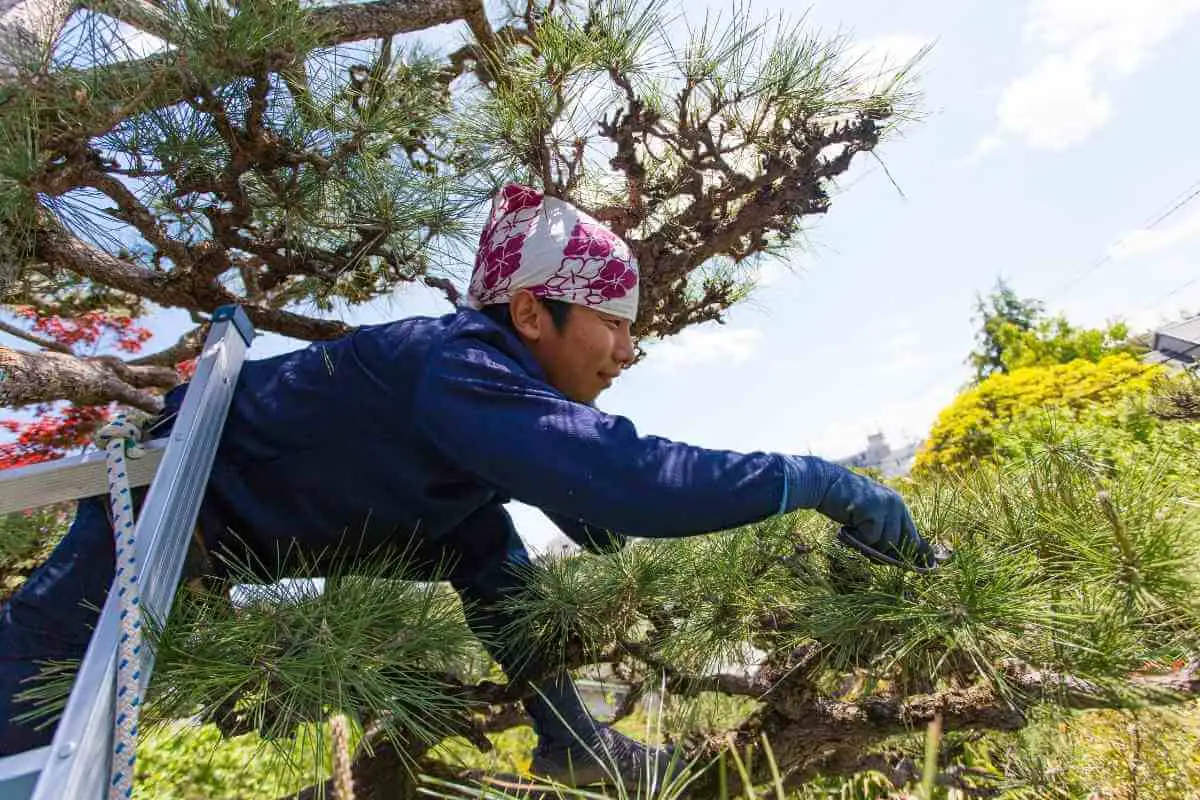Japanese pine tree pruning – also known as the art of candling – is a method of selectively removing the branch tips of a pine called “candles”.
This type of pruning usually takes place twice a year, when the candles appear, and it helps to reduce the tree’s size while still allowing new candle growth.
Many gardeners long to achieve this style of pine pruning, and you can do so yourself by removing the dominant candles held within candle clusters on your pine trees.
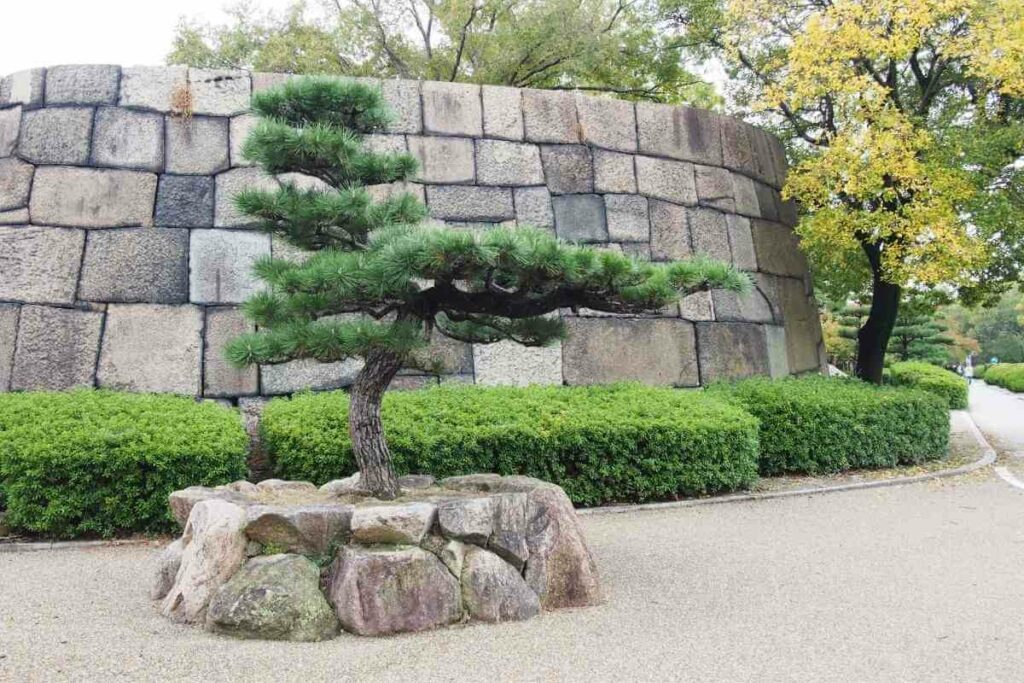
Below, we’ll explore the following questions to dive into the methods used to prune pine trees in the Japanese candling style:
- What does the ideal Japanese-style pruned pine look like?
- What is the Momiage pruning method?
- What is the Midoritsumi pruning method?
- What is the Megiri pruning method?
- What are the tasks involved in Japanese pine tree pruning?
What Does the Ideal Japanese-style Pruned Pine Look Like?
Japanese-style pine trees are pruned to have a specific aesthetic appearance. Ideally, a Japanese-styled pin should have branches shaped to look like half-clouds. They should appear rounded towards the top, whereas the underside is flatter.
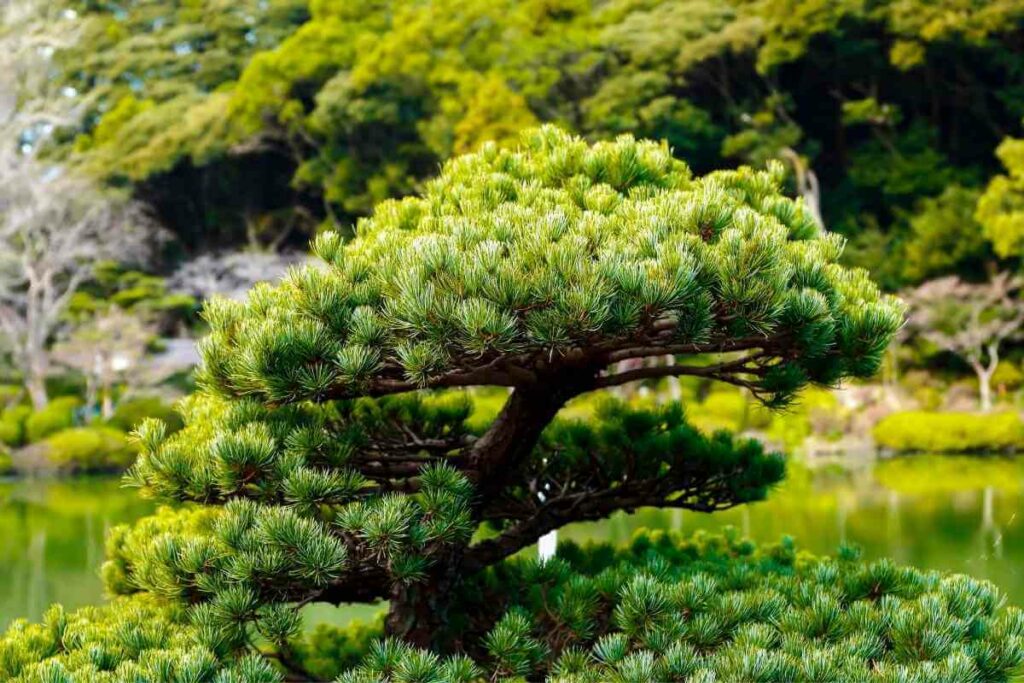
Some say that when you look at the bottom of the branches from below, they mimic the appearance of veins in a leaf or other veiny structure.
What Is the Momiage Pruning Method?
There are basically three different pruning methods when it comes to Japanese-style pine tree pruning.
They are each reserved for different times in the year to maintain and preserve the style.
The first one to note is Momiage pruning.
Momiage pruning is usually done late in autumn, but in colder geographical regions, you should do it a bit earlier in the season.
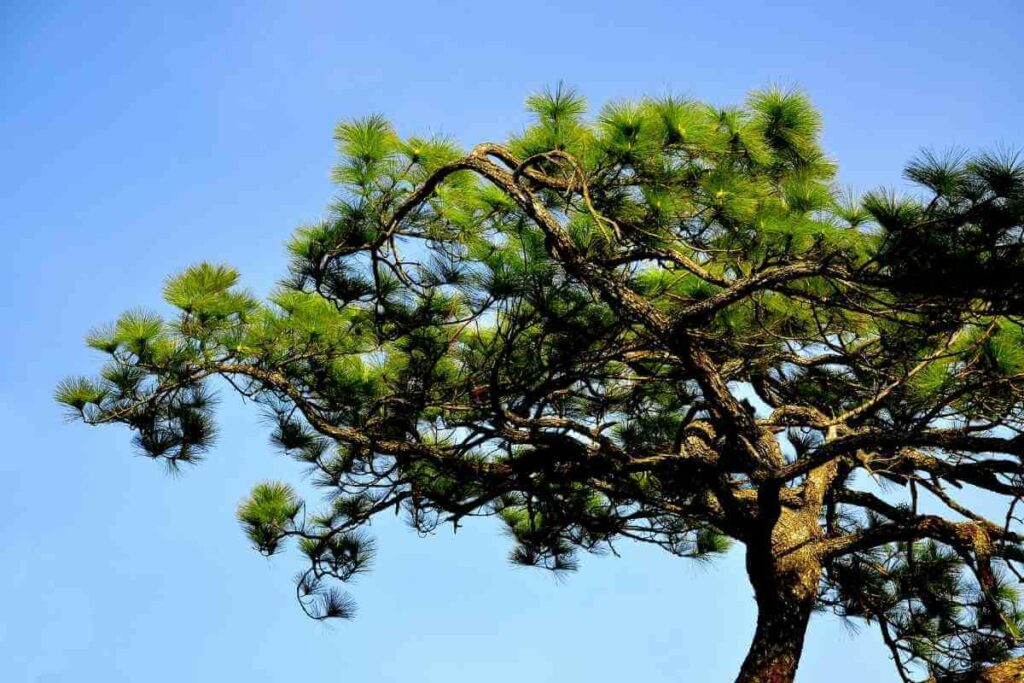
Traditionally, you only use your hands as tools during the Momiage pruning process.
This is because it’s a method of removing needles – specifically, only the old needles.
You remove old needles until you only have about 10 pairs left at the ends of the branches. If you find it difficult to remove needles by hand without damaging other parts of the pine, you can use shears.
What Is the Midoritsumi Pruning Method?
Midoritsumi pruning also plays a big role in the Japanese pine pruning style.
To achieve Japanese style pruning, you must do Midoritsumi pruning early in the summer season.
Midoritsumi pruning is a form of maintenance to pine trees.
Typically, you start at the top and work your way down the pine tree when using this method.
This is actually when the candling method comes into play because the candle-like branches emerge at this time of year.
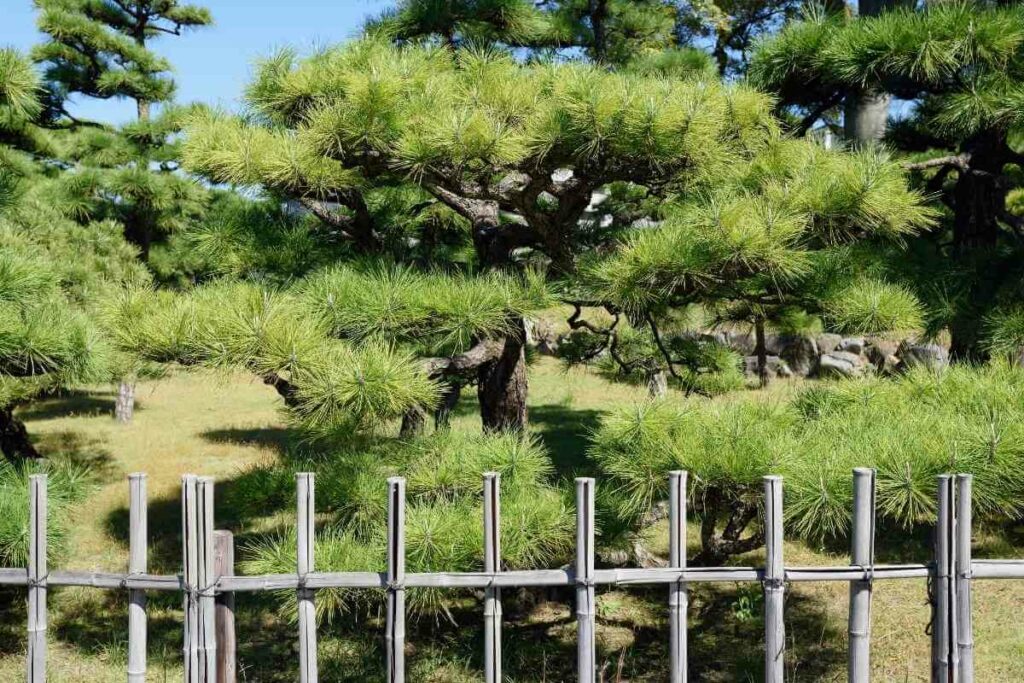
Again, this should be done by hand so as to not damage and turn the needles brown.
However, it can be more difficult to break off candles by hand, so a blade is allowed (like shears).
Follow these steps:
- Remove unnecessary candles (the long ones in the middle of a group of 3)
- Shorten remaining candles down to about ⅔ of their original height
While still very much essential, most gardeners find that this is the most difficult and delicate part of pruning pine trees in the Japanese style.
Remember This: The goal is to shape the tree and slow down its growth by directing energy to new branches. You still want to maintain the aesthetic beauty of its shape, though.
What Is the Megiri Pruning Method?
Finally, there is one more type of pruning session that goes on during the year.
Not everyone follows this method or cares to do it.
However, the Megiri pruning session usually takes place in late summer (June or July).
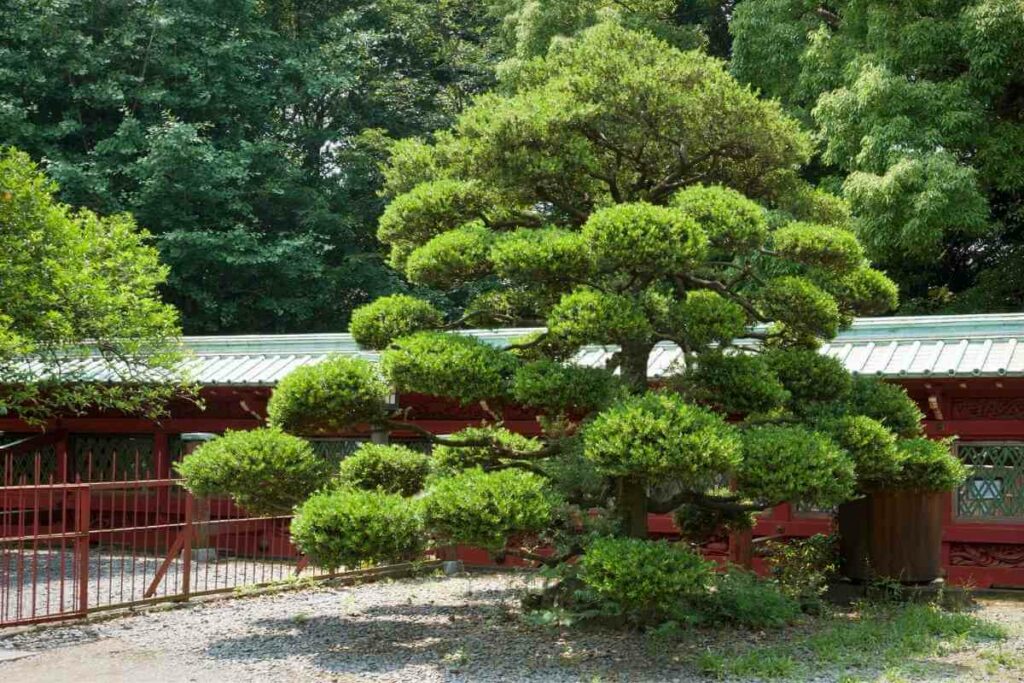
One reason that most people avoid this method is that it can be time-consuming if you have a lot of trees to prune.
Megiri pruning involves a process similar to what is done when pruning bonsai trees.
You will follow these steps:
- First, remove the weaker, newer shoots with shears (not your hands)
- Second, come back in a couple of weeks and remove the strongest new shoots with shears
People typically do Megiri pruning to protect trees from strong storm winds, as well as warm-weather plant illnesses.
Keep In Mind: It’s worth noting that you shouldn’t perform this type of pruning on weak or sick pine trees. Your pines can become compromised if you prune them when they’re not healthy.
What Are the Tasks Involved in Japanese Pine Tree Pruning?
There are several different types of pruning tasks when it comes to the Japanese style.
Each of these tasks plays a role in achieving the delicate shape and appearance we have come to know as the signature style.
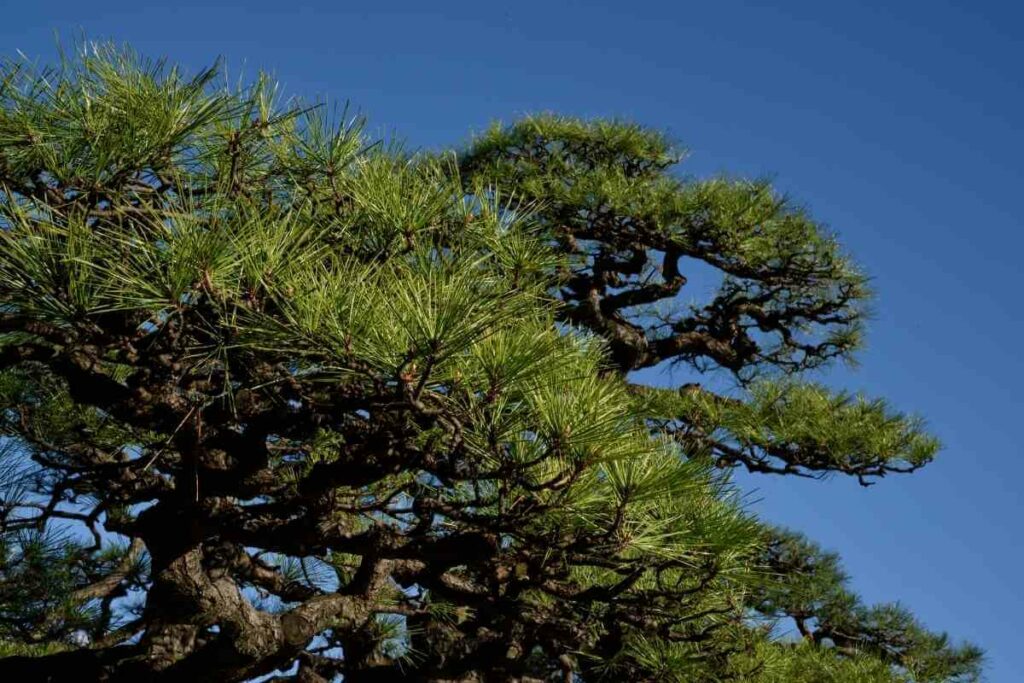
The different pruning tasks include:
- Removing old needles – removing dead and faded needles annually promotes bud production (involved in Momiage)
- Needle grooming – selectively choosing needles to remove in order to affect the shape
- Poodle (pom-pom) conversion – transforming a “cheap”-looking pine tree into a Japanese style pine tree
- Whorl pruning – pruning the whorls (the clusters of branchlets) to affect the shape of the pine tree and make it more aesthetically pleasing
- Cascading branches – pruning the branches to create a cascading or “waterfall” shape going down the tree
Conclusion
Pruning pine trees in the Japanese style involves methods such as Momiage, Midoritsumi (candling), and Megiri.
It’s a delicate process that requires the right attention at different times of the year.
By following the above methods, you can achieve finely sculpted Japanese-style pine trees.
